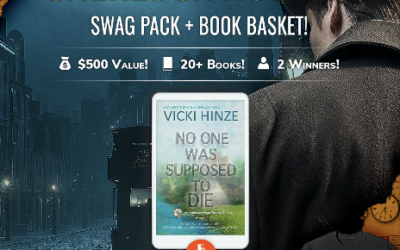My husband is a multi-medium artist. One medium is pottery. I enjoy watching him work with the clay and have since he was working with Raku one day and I was helping him quench the pots.
You take these red-hot pots out of the kiln and put each one into a small metal garbage can that’s got shredded newspaper in it. The pot sets the paper on fire. You get this burst of flame, and cram the lid on the can. Then you wait.
At the duly appointed time, you use long tongs to remove the pot and use water to quench it. Only then do you know what you’ve actually got.
He says Raku is like Christmas. You don’t know what’s inside the package until you open it.
Interestingly enough, people are the same way. Only in getting to know them do you expose their layers–some would say, their true colors. Like the Raku, as you process these layers, you see changes and differences that alter your perception and your reaction to what is and what’s revealed.
What you thought and what you come to know is often two entirely different things.
And in that, there’s merit for writers, particularly in creating characters.
We learn the nature of people through observation and revelation. What they want us to see, and what they can’t avoid revealing. And with each new insight, we observers place a value on that aspect of their character. Our opinions, judgments, values become measuring sticks for others.
Don’t bother saying, “I don’t judge.” We all judge and measure.
Most people (and therefore characters) are a blend of “good and bad” in our eyes. Whether they fall on the overall good or bad list depends on how they stack up as an entity. An example…
We meet x and admire his open attitude. He’s friendly and fun.
But as we watch x interact, we see that it’s an act. He isn’t genuine.
This changes our perception of him. We saw attributes that are now liabilities. Who wants to interact with someone who isn’t genuine?
But then y tells us that x is shy and he really has to force himself to be open to others. It’s very hard for him, yet he’s working on it.
This changes our perception of x again. We admire the effort. We relate to the struggle. Who among us hasn’t struggled to overcome something difficult for us?
And so it goes. With each new revelation, our perception can alter in ways we gauge to be favorable or unfavorable.
And this is the key to creating complex characters.
There’s an article in my writers’ library on this site (www.vickihinze.com), CREATING UNFORGETTABLE CHARACTERS, that focuses intently on the how-to side of creation, so I won’t repeat that here. Instead, what’s on my mind this morning is the value of that complexity in characters.
In my life, I’ve met many people. Most, as I said, are a combination of good and bad traits (in my eyes). I explored these perceptions and how they influence us in REFLECTIONS, the fall feature article, also on my writing website. What I didn’t get into in any depth there was the ability of others to manipulate our reactions to them. That’s an important tool in fiction.
While manipulators and people who attempt to control us are not welcome in life, they are there, and most of us have to deal with them, or choose to not deal with them. That makes including them in our fiction favorable. After all, fiction is all about conflict.
Manipulators and control freaks make formidable fictional characters. Some people do these things–manipulate and control (or attempt to)–which are by and large considered negative, destructive and unwelcome traits, with the best intentions. They are attempting to be a positive and constructive influence. To encourage the best.
In your characters, these people would be those serving story roles as the interfering friend, the well-meaning parent or co-worker. Someone who is trying to “help.” The object of their manipulations and attempts to control might not want it, need it or ask for it. But in their eyes, they’re the object’s appointed savior, so to speak. Saving the object from dire consequences or even from him- or herself.
We (as readers) understand this, but we still don’t like what they’re doing. And typically, we don’t like them.
Then there are those who manipulate and attempt to control others for darker, self-serving reasons. They too make formidable characters. Typically, villains. While they still have positive and negative traits in their repertoire, their intentions are not to save the object of their machinations but to use, abuse, manipulate and control to serve their own interests. They are attempting through falsehoods to be a negative and destructive influence because it serves their goal.
Now these characters (again, typically villains), don’t see themselves or what they’re doing as bad. They might even see what they’re doing as noble and just. It isn’t, and readers and other characters see the truth, but the villain typically does not. Usually because s/he’s hiding behind someone or something else. (i.e., many psychotics hide behind God. Claiming their methods are insignificant because they’re doing His will.) Bizarre to rational people, but to the psychotic, this makes total sense. And we (as readers) understand this. We don’t agree, but we do understand. We might even admire the mental acuity in it, but we’re never going to accept this twisted rendition as normal, rational, or acceptable. Yet understanding is enough. And it is there where the villain obtains his strength.
If you create a black-hearted bastard as a villain–a character who is all bad and has no redeeming qualities–then you and the reader know exactly what to expect. He will give his all to doing his worst. Why? Because that’s what people do. So when he does his worst, he’s only living up to expectations. The outcome of his actions and the consequences are foretold. Anticipated. No surprise. And that equates to no suspense. And to little interest.
It also robs the villain of his humanity. No one is all bad (though admittedly some try hard to be). The bottom line is that this villain is boring, dull and flat. No matter how horrific his actions are, or how twisted his mind is, he can’t surprise or stun or shock us. He’s stripped of that ability by his lack of redeeming qualities. And just like a person with those qualities, that sum makes him weak and ineffective.
But what if this blackhearted bastard is a normal man. Good and bad, soft and hard, tolerant and intolerant? What if he’s clever? Twisted to those who dig deeply enough to see his core, but normal to others who don’t, or who haven’t?
This villain has strength and constantly surprises because we don’t know what to expect, we are not signaling ahead on his actions or reactions, and we don’t know what buttons must be pushed for him to do his worst. We don’t know his worst. More interesting? Definitely. Stronger? Absolutely.
And because he is, he can carry more story weight.
Complex characters are all about character, yes. But they’re about motivations and internal conflicts, too.
In the past two decades, I’ve created a lot of characters, a lot of villains. And the ones that chill readers’ blood are the ones who successful fool most into believing they’re rational, reasonable and normal at the onset. As the story progresses, and their true colors are exposed, (revealing in bits their inner conflicts and motivations), they become greater obstacles until such time as the protagonist vanquishes them.
That exposure elevates the worthiness of the protagonist to be the protagonist. (If a villain is weak, it doesn’t take much of a protagonist to put him in his place. If he’s strong, it takes more. If he’s even stronger, it takes even more.) And that satisfies the reader’s need to see justice.
Often in life, we don’t see justice. In stories reader’s want it, and being aware of it, authors usually give it to them.
This doesn’t just apply to villains. The reverse is also true. We meet a character we think is a bad person and discover through the story events that they’re a good person. And sometimes we create characters that are an intricate blend and even the author isn’t sure whether or not a character is a hero or a villain until the very end of the book.
If you think that can’t happen, I’m telling you it can–and has happened to me. There was a secondary character in one of my military thrillers that seemed good, then bad, then good, then bad and then I just didn’t know whether he was honorable or the worst kind of bastard. I had to completely write the book to find out.
The secret was revealed in his motivations. In his internal conflict. And here’s the part that makes this worth sharing…
When I went back and looked at just his character in relation to the novel, I saw what spurred each and every twist in perception. His motivations, goals and conflicts were intact and in place. Subtle strokes I hadn’t deliberately inserted were there, too. I thought, at the end of the book when I discovered which he was, I’d have to extensively rewrite to make him credible and consistent. I didn’t have to change one word. Not about him.
Why?
I would guess that it’s because I got to know him as a person before I started writing him, and when subconsciously he nudged me in a direction other than the one I intended, I followed.
That doesn’t sound logical, I’m sure, to non-writers, but writers know exactly what I mean. If the writer is prepared (knows the character’s story function and gives him/her traits, attributes and skills to perform it), early on in a story, the characters take over. And sometimes they know where they’re going and who they are even if the writer consciously doesn’t know.
Anyway, creating characters is like slinging pottery. That’s what I wanted to say. The artist has some control, but in the end, there are surprises. Some are pleasant, some aren’t. But as it is when dealing with people and revealing those layers or true colors, even those who aren’t pleasant are usually interesting.
Blessings,
Vicki
©2008, Vicki Hinze





